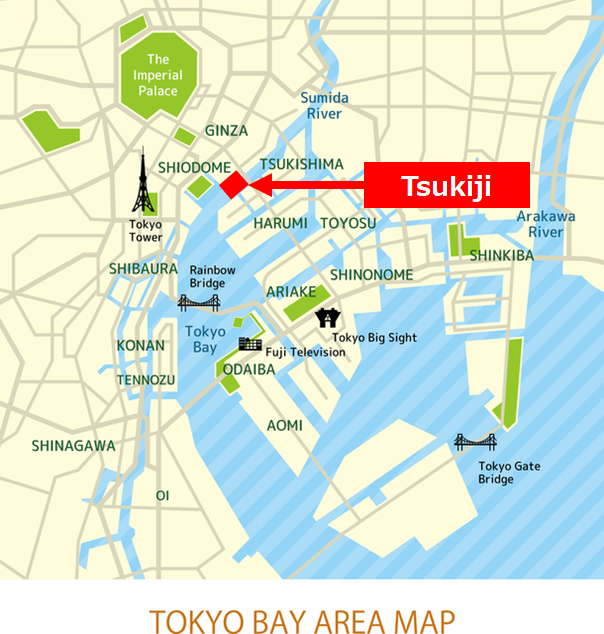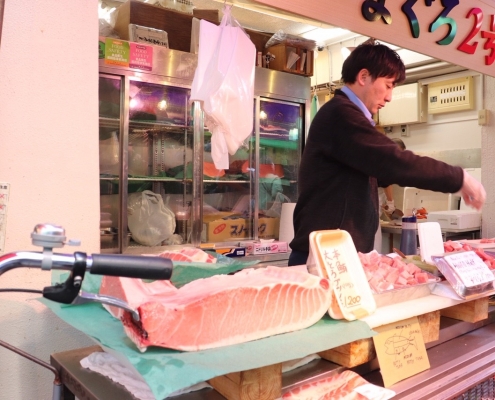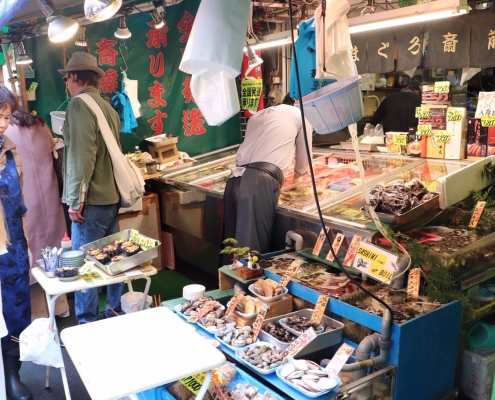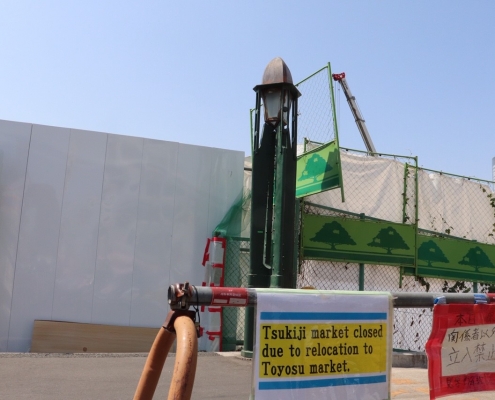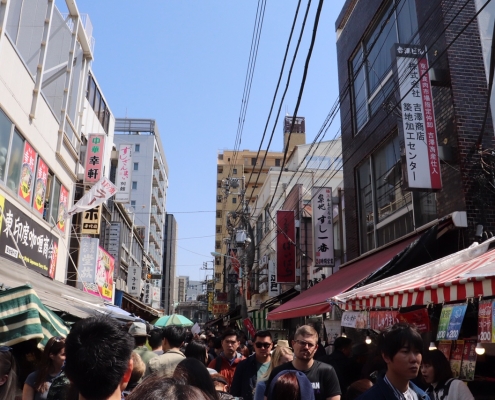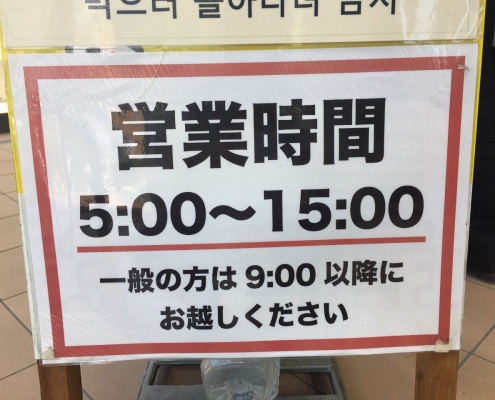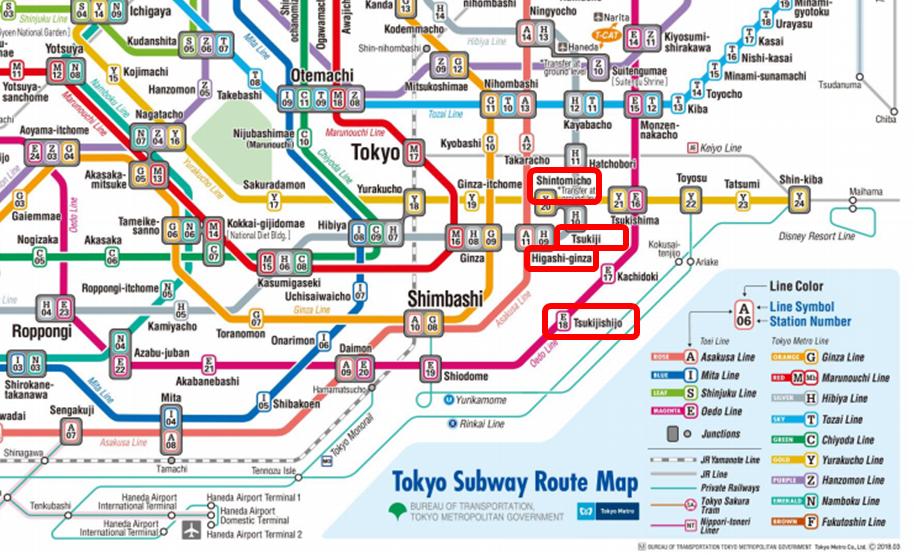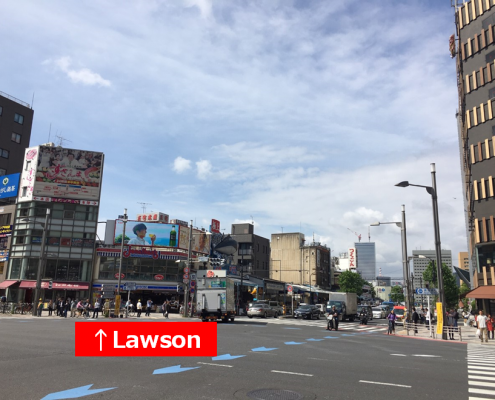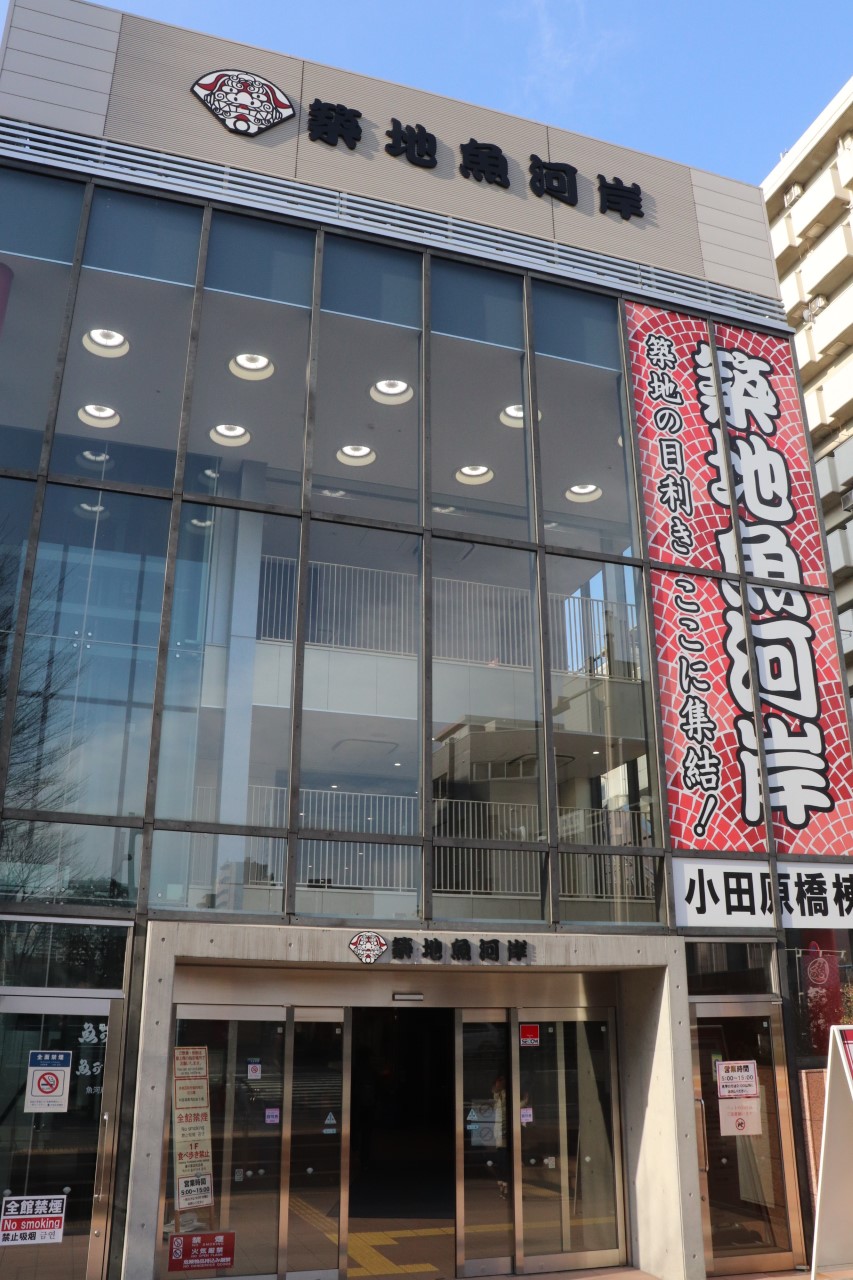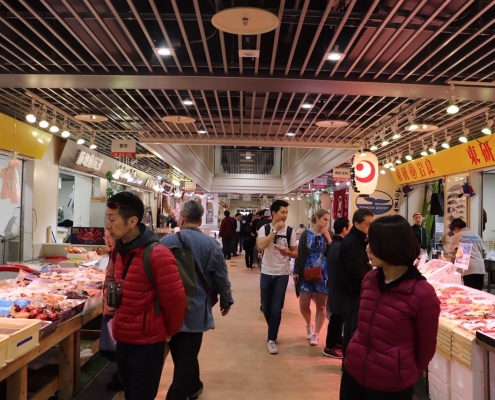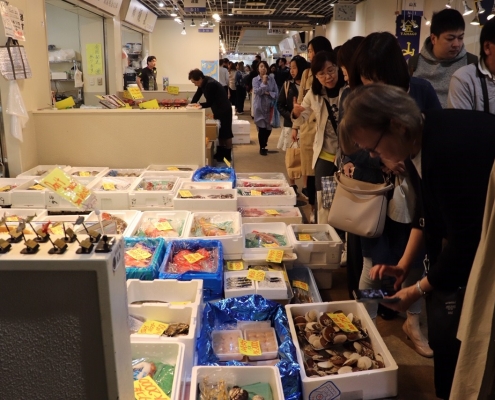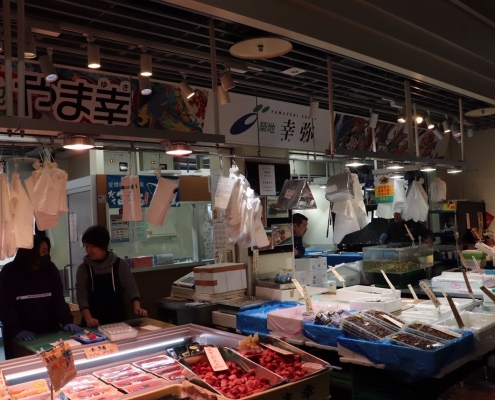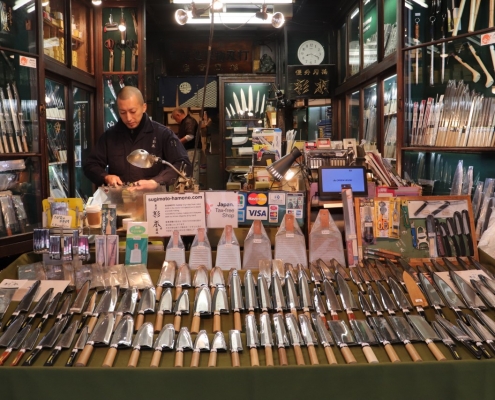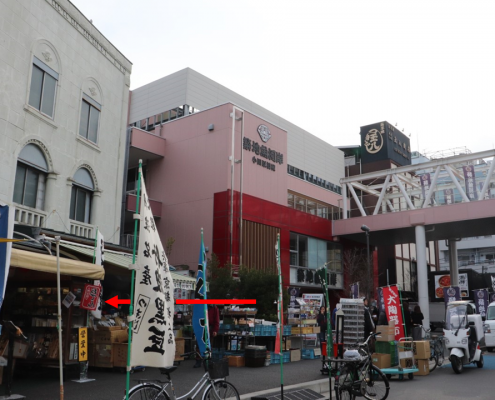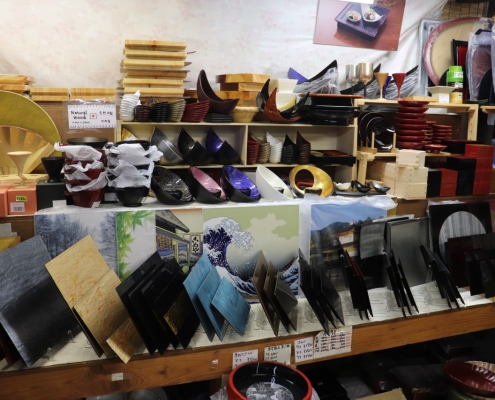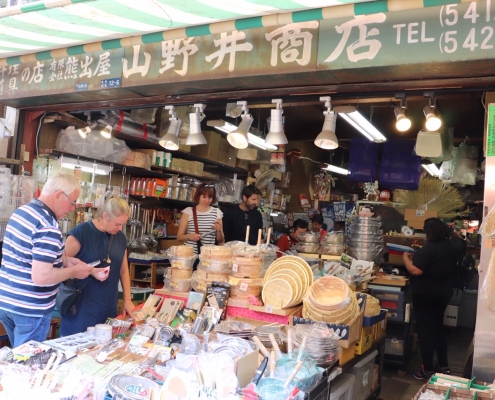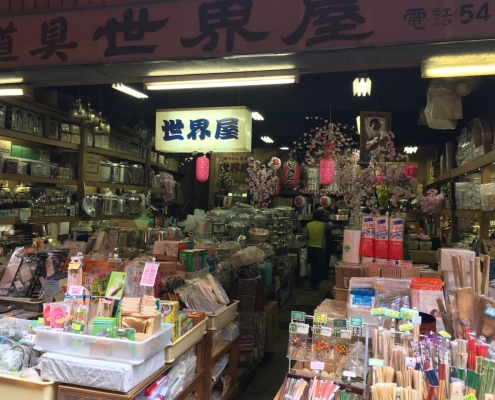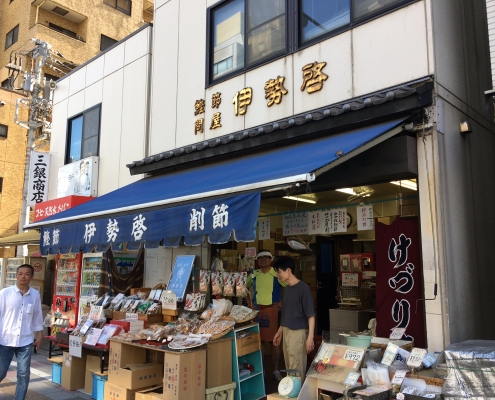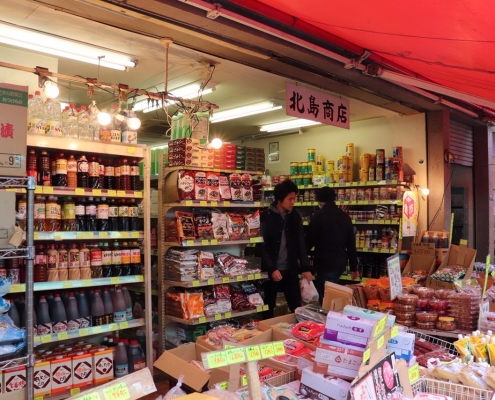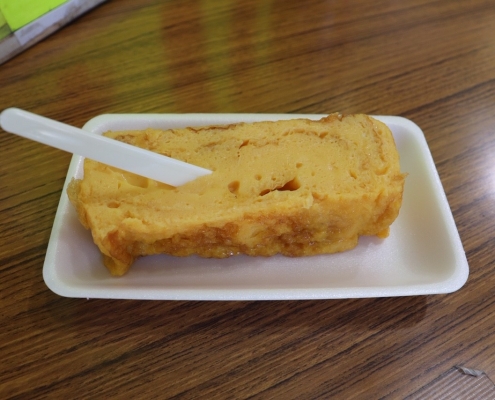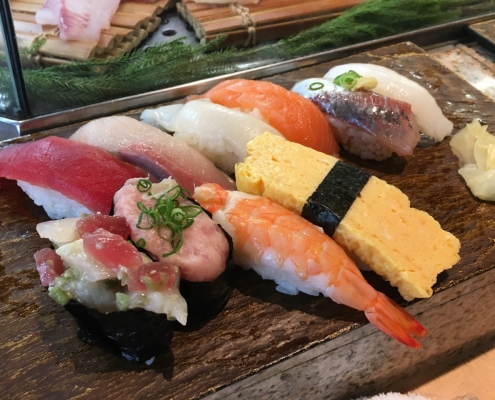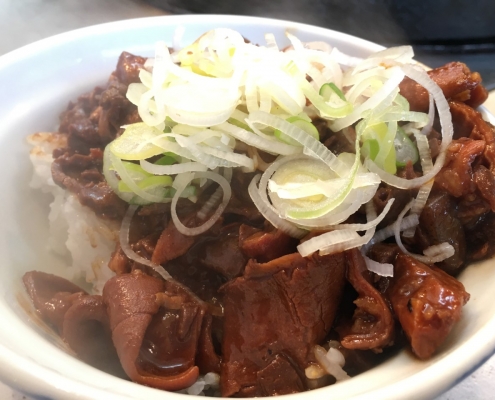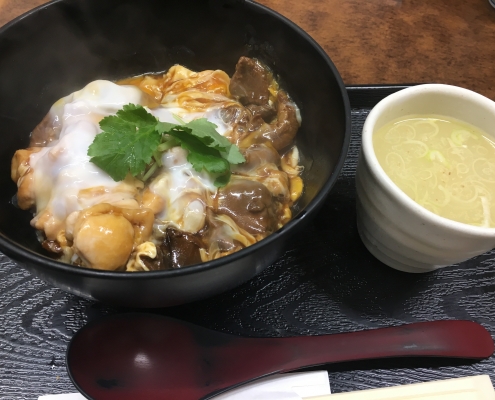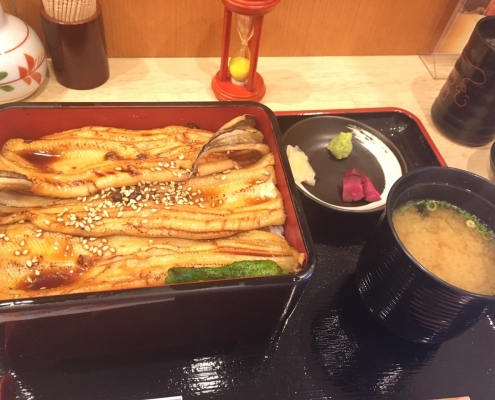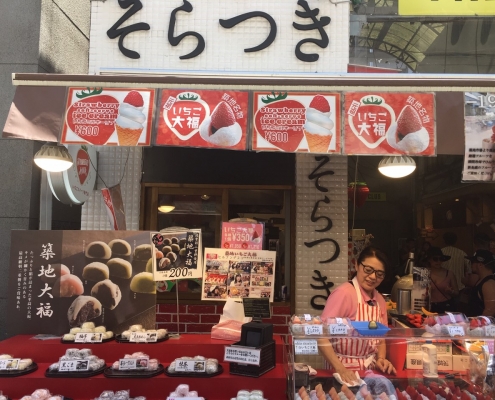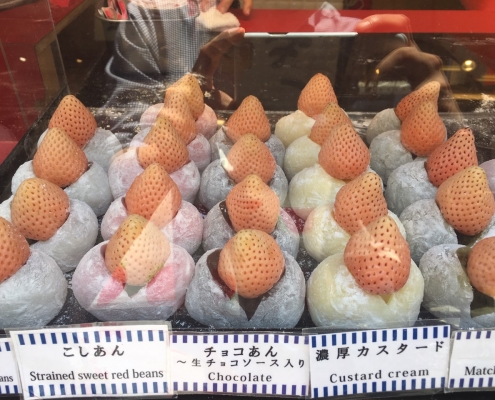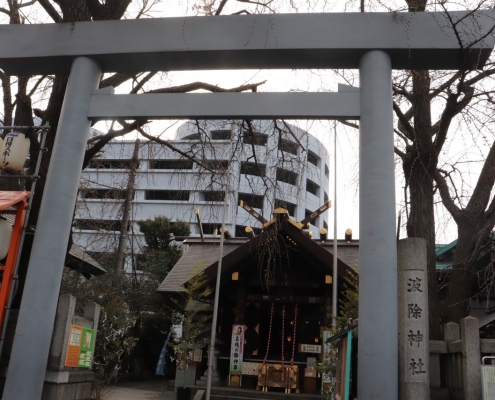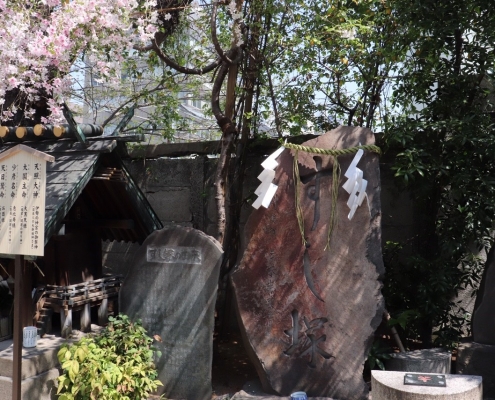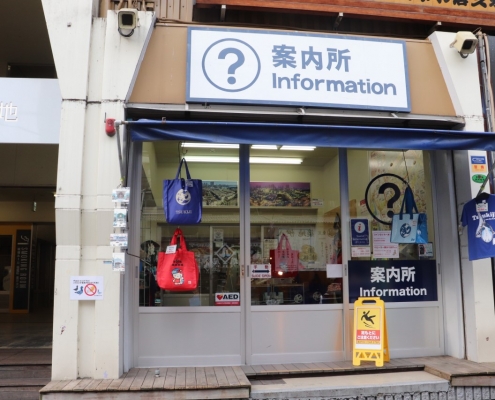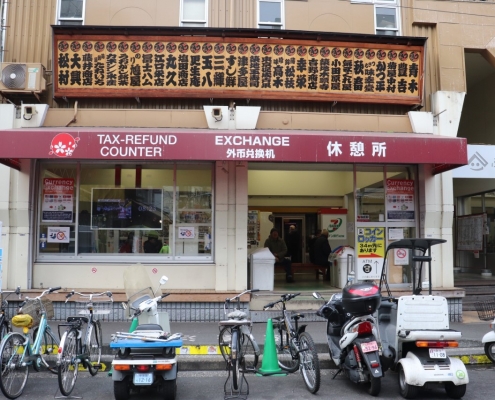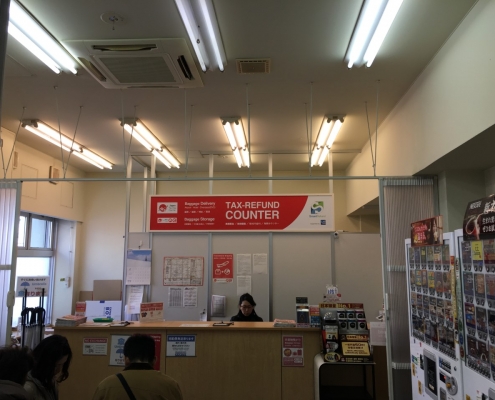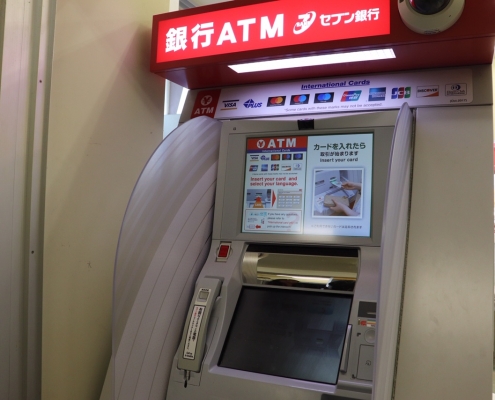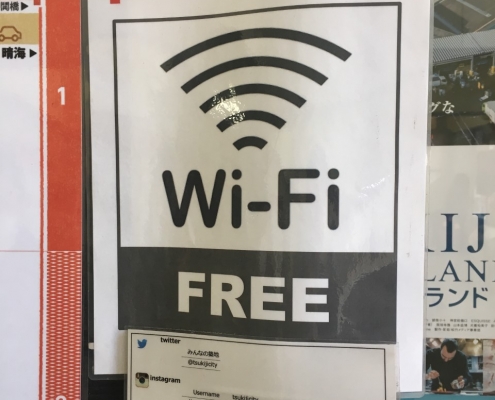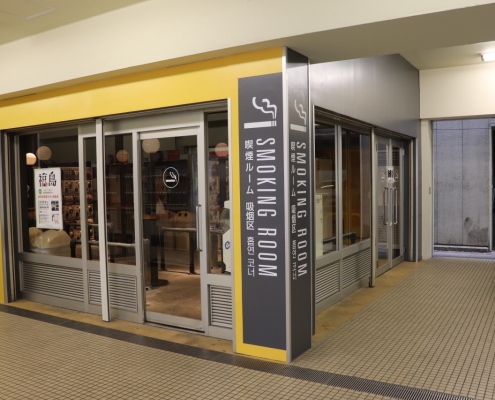Tsukiji still attracts foodies!
Outline
Tsukiji, located at the center of Tokyo, had a world-class market both in terms of quality and quantity.
It gathered seafood from the globe until October, 2018. Watching seafood, treasure for chefs, transported every day, René Redzepi of Noma in Copenhagen said, “If you are an archaeologist you go to the pyramids. If you are a cook you need to visit Tsukiji fish market” in a documentary film, Tsukiji Wonderland.
Due to the aging facilities of the market, most of the wholesalers and intermediate wholesalers moved to the Toyosu market about 3km away in October, 2018. Some people may think all of the Tsukiji market was transferred to Toyosu, but that is not the case. There are still 118 seafood retailers in Tsukiji and run their business for general customers and restaurants.
Besides 118 seafood retailers, there are 17 kombu (kelp) and niboshi (dried baby sardines) stores, 15 nori (dried seaweed) and tea stores, 10 bonito flake stores, 9 kitchen knife stores and 9 tamagoyaki (Japanese egg omelet) stores. Tsukiji still attracts foodies and chefs from the world with its prominent food culture.
The Inner and Outer markets
場内(Jonai) / 場外(Jogai) 市場 (Market)
The Inner market (“Jonai”) is where wholesalers and intermediate wholesalers used to run business and the Outer market (“Jogai”)is where retailers sold their goods. As the wholesalers and intermediate wholesalers moved from the Inner market to Toyosu, local people call what is left in Tsukiji the Outer market (“Jogai Shijo”).
The Inner market (“Jonai”) is closed on Oct. 2018
The Outer market (“Jogai”) still attracts foodies from all over the world
Business Hours
Business hours varies by shop, usually they open from early morning to 14:00 or 15:00 (Better to visit in Tsukiji in morning time!) and
many of them are closed on Sundays, national holidays and some Wednesdays.
How to get to Tsukiji?
By Train
There are 4 nearest stations to the Tsukiji market. It takes about 1 to 5 minutes from each station on foot.
Tokyo Metro Hibiya Line, Tsukiji Station, Exit 1 or 2
Toei Oedo Line, Tsukiji-shijo Station, Exit A1
Toei Asakusa Line, Higashi-Ginza Station, Exit 5 or 6
Tokyo Metro Yurakucho Line, Shintomicho Station, Exit 4
From the Ginza area
The Ginza area attracts wealthy gourmets and features 42 restaurants which are awarded stars by the Michelin Guide Tokyo 2019. The thriving food culture in Ginza cannot be separated from the Tsukiji market. Till 2018, we used to see chefs heading to their restaurants in Ginza by bike after purchasing ingredients in Tsukiji early morning.
It takes about 10 minutes from Ginza to Tsukiji. Head east on Harumi Street, the main street, toward the intersection of Tsukiji 4. You will find a convenience store named Lawson, which marks the center of the Tsukiji Outer market.
What to see?
Seafood
Tsukiji Uogashi is a market with 60 seafood and produce stores, opened in 2016 to preserve the liveliness of Tsukiji for future generations even after the transference of the market. Since professionals in the food industry come for their business from 5am to 9am, you can enjoy your shopping after that time. The market closes at 3pm, so I recommend that you visit before noon. Tsukiji Uogashi consists of 2 buildings, Odawarabashi Building and Kaikobashi Building, both of which you should visit. There is a variety of seasonal seafood traded, including tuna, salmon, sea bream, yellowtail, horse mackerel, mackerel, sardine, squid, octopus, sea urchin, and shrimp.
At the back of Kaikobashi Building, you will find Yukiya, a retailer for the general public run by one of the most famous intermediate wholesalers of tuna, Yamayuki. Yamayuki is known for selling their goods to sushi restaurants awarded Michelin stars, such as Masuda, Kurosaki, and Harutaka, and Japanese gourmets recognize its name and quality.
Japanese Knives
Kitchen knife stores in Tsukiji have developed with its food culture and there are still 9 of them, supported by both domestic and foreign professional chefs till today. Note that there are some stores that do not accept credit cards.
Masamoto
4-9-9 Tsukiji Chuo-ku, Tokyo Japan
Hours: 6:00am to 3:00pm
Holidays: Sundays, national holidays, and holidays of the Tsukiji market
Sugimoto
4-10-2 Tsukiji Chuo-ku, Tokyo Japan
Hours: 7:00am to 4:00pm
Holidays: Sundays, national holidays, and holidays of the Tsukiji market
Aritsugu
4-13-6 Tsukiji Chuo-ku, Tokyo Japan
Hours: 6:00am to 3:00pm
Holidays: Sundays, national holidays (and some Wednesdays)
Kitchen Items
People tend to think of Kappabashi Dogugai (Kappabashi Tool Street) when they want dishware or kitchen equipment, but you can purchase some in Tsukiji and ship them overseas as well. There are some stores where the staff from very well-known stores in Europe come secretly to purchase their equipment. I recommend that you visit both Kappabashi and Tsukiji if you come to Tokyo for dishware and kitchen equipment.
Ichifuji
4-14-14 Tsukiji Chuo-ku, Tokyo Japan
(In the Uogashi market, by Odawarabashi Building)
Hours: 5:00am to 2:00pm
(When the Tsukiji Outer market is closed, from 8:00am to 2:00pm)
Yamanoi Shoten
Address: 4-12-6 Tsukiji Chuo-ku, Tokyo Japan
Hours:
Monday to Saturday 5:00 to 14:00
Sunday and National Holidays are closed
Sekaiya
Address: 4-9-1 Tsukiji Chuo-ku, Tokyo Japan
Hours:
6:00 to 15:30
Holidays: Sundays, national holidays, and holidays of the Tsukiji market
Nori Seaweed
Maruyama Nori
Address: 4-14-17 Tsukiji Chuo-ku, Tokyo Japan
Hours:
Monday to Saturday 7:00 to 15:00
Sunday 9:00 to 14:30
Katsuobushi Dried Bonito
Isekei
Address: 4-11-2 Tsukiji Chuo-ku, Tokyo Japan
Hours:
7:00 to 14:30
Holidays: Sundays, national holidays, and holidays of the Tsukiji market
Grocery Shop
Kitajima Shoten
Address: 4-10-15 Tsukiji Chuo-ku, Tokyo Japan
Hours:
5:00 to 14:00
Holidays: Sundays, national holidays, and holidays of the Tsukiji market
What to eat?
Egg Omelet
Marutake
Tamagoyaki egg omelet from 100JPY
Address: 4-10-10 Tsukiji Chuo-ku, Tokyo Japan
Hours:
4:00 to 14:30
Holidays: National holidays, holidays of the Tsukiji market and irregularly Sundays
Sushi
Sushi Cho Tsukiji
Sushi Standing Bar / Lunch Set 1,000JPY
Address: 3-10-9 Tsukiji Chuo-ku, Tokyo Japan
Hours:
Monday to Saturday 11:00 to 22:00
Sundays and National Holidays 11:00 to 21:00
Horumon-don
Kitsune-ya
Horumon-don (miso-flavored organ stew over rice) 850JPY
Address: 4-9-12 Tsukiji Chuo-ku, Tokyo Japan
Hours:
6:30 to 13:30
Sundays and National Holidays: Closed
Oyako-don
Torito
Oyako-don (Chicken and egg rice bowl) price starts from 900JPY
Address: 4-8-6 Tsukiji Chuo-ku, Tokyo Japan
Open: 7:30 to 14:00
Holidays: Sundays and National holidays
Anago Conger Eel
Yoshino Kichiya
Broiled conger eel with sweet soy sauce over rice (Price starts from 1,700JPY)
6-21-5 Tsukiji Chuo-ku, Tokyo Japan
Hours:
Lunch 10:30 to 15:30
Dinner 17:00 to 20:30 (1st and 3rd Saturday only)
Closed: Wednesday and irregularly Thursday
Sweets
Soratsuki
Daifuku mochi cake shop (price starts from 200JPY)
4-11-10 Tsukiji, Chuo-ku, Tokyo Tsukiji Chuo-ku, Tokyo Japan
Hours:
8:00-15:00
Architectures
Tsukiji Honganji
6-27-2 Tsukiji Chuo-ku, Tokyo Japan
Holidays: Sundays, national holidays, and holidays of the Tsukiji market
Namiyoke Shrine
“Namiyoke” means to protect from ocean waves. The shrine was founded about 350 years ago to ask for the god’s protection of Tsukiji, which faces the ocean, from high waves. It now exists for merchants in the Tsukiji area as a power spot that protects you against a disaster and help you overcome “tides.” There is also famous Sushi-zuka, a mound created by the union of Japanese sushi chefs for “the town of sushi” to express their gratitude for ingredients. Those who are joining a sushi business or food business often come to wish for luck, so I hope you chefs also visit to thank ingredients and pray for good fortune.
6-20-37 Tsukiji Chuo-ku, Tokyo
http://www.namiyoke.or.jp/
Information Center
Plat Tsukiji
4-16-2 Tsukiji Chuo-ku, Tokyo, Japan

